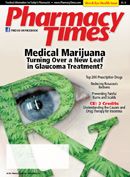Publication
Article
Pharmacy Times
From the Publisher: What's the Buzz on Medical Marijuana?
Author(s):
Medical marijuana has been a burning topic of discussion in the medical community for well over 20 years, but the heat seems to be turning up recently. As of January 2010, a total of 14 states have passed legislation to legalize marijuana, with a physician’s recommendation, for the treatment of certain medical conditions. Several more states are heading in that direction.
Washington, DC, just passed legislation to allow the mayor to establish up to 8 dispensaries, where patients with certain chronic illnesses could receive 2 ounces of marijuana per month, with a mayoral option to raise that limit to 4 ounces. With the District of Columbia entering the medical marijuana discussion, the White House and Congress are brought into the picture—and the issue of medical marijuana will likely receive national attention in the coming days.
Lawmakers must now decide whether to allow the city to proceed with the plan in Washington. Public support for the legalization of marijuana for medicinal purposes is generally high, so no one expects the White House or Congress to stop this local legislation from proceeding in their own backyard—despite the reluctance on the part of the federal government to legalize marijuana.
The larger question is how patients actually receive marijuana in those states that have legislation in place, and for what chronic illnesses. In our March article, “A Pharmacist’s Guide to Medical Marijuana,” we outlined the clinical and legislative hurdles, as well as the role of the pharmacist. Like any drug, medical marijuana has side effects, and when taken by a chronically ill patient—who is most likely also taking other medications—interactions are inevitable. In the article, Harvey Maldow, RPh, MS, chief executive officer of the New Jersey Pharmacists Association, said it best: “Who better to monitor the potential serious side effects of marijuana, with its unique and complex pharmacological profile, than a pharmacist?” And who knows what delivery models could eventually evolve in the future in a free market?
This month’s cover story, “Medical Marijuana: Turning a New Leaf in Glaucoma Treatment?” focuses on the therapeutic use of medical marijuana in glaucoma. As early as the 1970s, the connection between medical marijuana use and glaucoma was front and center, thanks to a determined patient. That patient’s compelling story—with elements of individual persistence, independent thinking, and personal advocacy in the face of great adversity—is told in the article beginning on page 56. It’s a great story that will surely resonate with those who think it’s important to speak up, challenge the system, and take individual responsibility for their lives.
Today, the pharmacist is challenged with helping patients navigate the safe administration of marijuana while dealing with difficult chronic diseases, including glaucoma, and working with the health care team for the best long-term outcomes. It’s a significant challenge, yes, but I join the many in our health care professional community who appreciate the trend toward more options for caregivers in treating their patients.
The overall theme of this issue is Skin & Eye Health. In addition to glaucoma, we also feature important updates for the pharmacist on the treatment of rosacea (see “Reducing Rosacea’s Redness”), counseling tips for patients suffering from common household burns and scalds, and the newest products and strategies for treating sunburn (“Damage Control! Protecting Skin with Sun Care Products” ). We’re here to help guide the pharmacist in the very latest thinking in skin and eye health, provide essential resources, and as always, field the important issues. Let us know what you think.
Thank you for reading.

Mike Hennessy







